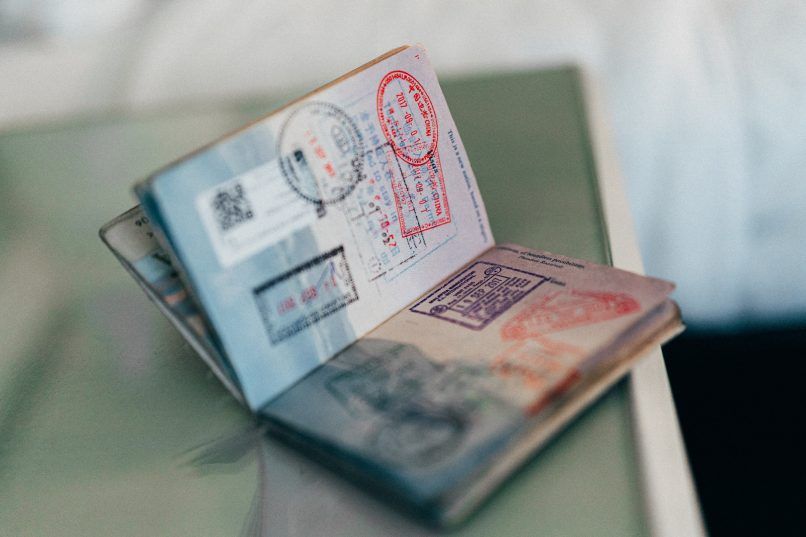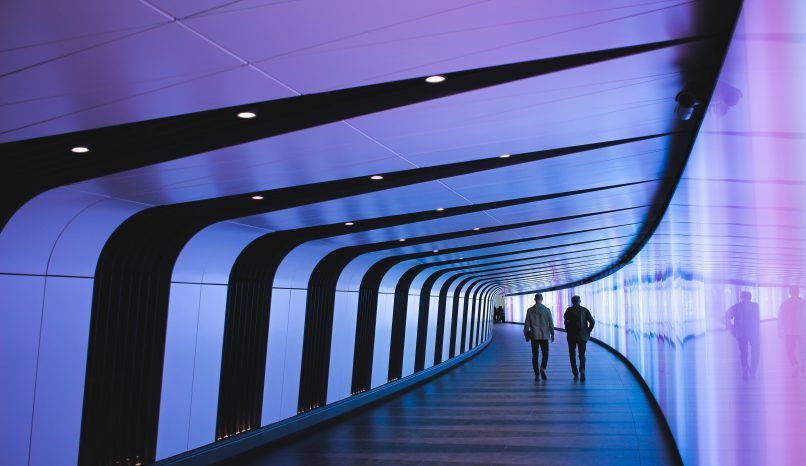What will your passport look like in the future? How will 3D printing help hotels? And what role will self-driving vehicles play in future travel? A recent report has envisioned what travel will look like in 2070, and it sounds wild.
While a report predicting how we’ll travel in 2070 envisions that our “heartbeat signatures” could replace our passports, the analysis published by Easyjet also demonstrates how new technologies can be useful for reinventing the tourism industry to become more sustainable.
[Hero Image Credit: Tom Parkes/Unsplash; Featured Image Credit: Deepmind/Unsplash]

What will future travel look like in the year 2070? A few ideas
An itinerary’s carbon footprint, the ecological impact of a hotel stay, managing the flow of visitors to a popular destination: these are some of the numerous challenges the world of tourism is facing as it looks upon the future. Which is why it’s interesting to delve into the report published by Easyjet to identify the innovations that could help shape a more sustainable approach to travel by 2070. This detailed analysis, developed with the help of scientists and engineering and aerospace innovation experts, includes some headline-making projects such as the use of a cardiac signature as a passport, thus relegating biometric fingerprint and iris recognition to the past. Another idea outlined in the report suggests that in the future ergonomic airplane seats could adapt to our body shape, size and even temperature, which is a very appealing prospect.

The usefulness of 3D-printing
It’s clear that one of the major challenges of travel for the future is about improving comfort, but the issue of sustainability is also key and it too can’t be discussed without looking at new technologies. For instance, 3D-printing could make traveling with a suitcase an obsolete practice. All we’d have to do is tell our hotel what size we wear to get suitable, customised clothes to wear during our stay. It’s an idea that could lower the carbon footprint in more than one way: not only would it reduce transport costs, it could also cut back on the phenomenon of buying clothes specifically to be worn on a short vacation. The experts envisage that the material of these clothes could be recycled, or even reworked for another traveler.
3D printing could also come in handy for mealtime. Hotels could significantly reduce the food waste generated by vast breakfast buffets by relying instead on culinary robots that instantly prepare our orders.

More autonomous travellers?
After we get off the train or the plane, we’ll no longer have to search for a bus to take us to our hotel. A self-driving vehicle would be ready to take us to our destination, while the technology-packed vehicle would at the same time be able to send information to the hotel regarding our imminent arrival. No more waiting in a line at the hotel’s front desk to check in.
Biometric authentication
In fact guests might no longer have to deal with hotel employees at all in order to receive any kind of room key, electronic or not; some form of biometric authentication could facilitate opening the door. As for getting around throughout the stay, it would also be a matter of relying on self-driving vehicles including perhaps some e-VTOL air taxis.
Reusable human energy
Meanwhile hotels could even be “human-powered.” While currently many hotels are adding photovoltaic panels for solar energy to heat rooms and swimming pools, in the future hotels could “harvest energy from guests’ footsteps to generate power.” In fact, a passenger walkway project in Abu Dhabi International Airport employed just such a system, capturing the energy produced by travelers’ footsteps, and converting it into off-grid energy used to power local LED lighting.
Where hotel constructions fits in
Finally, hotel construction could be less costly for the planet if they could be easily reconfigured to meet each guest’s particular needs. Smart rooms would have the configurations to accommodate the visiting party, either as a double or single room with modular walls. Meanwhile rooms would also already be programmed for the guest’s desired mattress firmness and ambient temperature.
This story is published via AFP Relaxnews.
Bagikan Berita Ini














0 Response to "What will travel look like in 2070? A Future Travel Report - Lifestyle Asia Bangkok"
Post a Comment